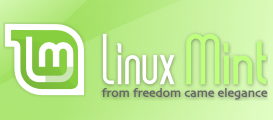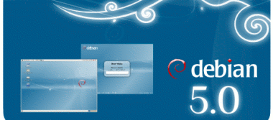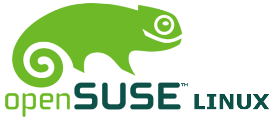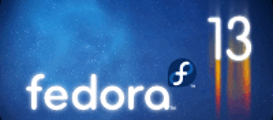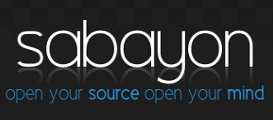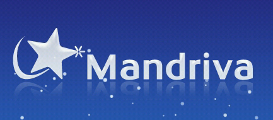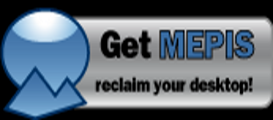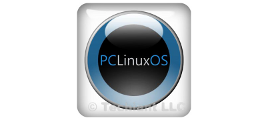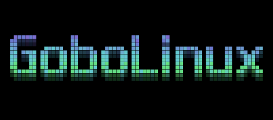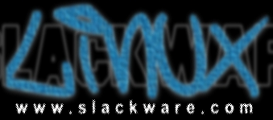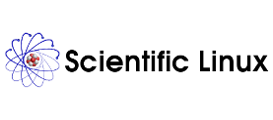Super-fast and great-looking, Ubuntu is a secure, intuitive operating system that all computer types.
- Ubuntu is free. Always has been and always will be. From the operating system to security updates, storage to software
- Ubuntu is fast to load, easy to use, available in most languages and accessible to all
- Ubuntu applications are all free and open source – so you can share them with anyone you like, as often as you like
- Ubuntu comes with full support and all kinds of services available worldwide
- Ubuntu is far more than an operating system. With thousands of applications to choose from, and completely free and easy to use
- Ubuntu is made for sharing. Use it, modify it, improve it, share it. Anywhere, any time and with any number of people all over the world. No licence required
- Ubuntu operating systems are regularly updated and come in a new, improved, easy-to-install release every six months, so you’re always up to date
- Ubuntu comes with all the support you need and powers the most popular computers – on servers, desktops, notebooks and netbooks
- Ubuntu comes with a ready-made community dedicated to building and promoting free systems and software
Ubuntu
To get the latest version of Ubuntu click on the image
Linux Mint produces an elegant, up to date and comfortable GNU/Linux desktop distribution.
Linux Mint is one of the surprise packages of the past year. Originally launched as a variant of Ubuntu with integrated media codecs, it has now developed into one of the most user-friendly distributions on the market – complete with a custom desktop and menus, several unique configuration tools, a web-based package installation interface, and a number of different editions. Perhaps most importantly, this is one project where the developers and users are in constant interaction, resulting in dramatic, user-driven improvements with every new release. DistroWatch has spoken to the founder and lead developer of Linux Mint, Clement Lefebvre, about the history of the distribution.
Linux Mint
To get the latest version of Mint click on the image
The Debian Project is an association of individuals who have made common cause to create a free operating system.
This operating system that we have created is called Debian GNU/Linux, or simply Debian for short.
An operating system is the set of basic programs and utilities that make your computer run. At the core of an operating system is the kernel. The kernel is the most fundamental program on the computer and does all the basic housekeeping and lets you start other programs.
Debian systems currently use the Linux kernel. Linux is a piece of software started by Linus Torvalds and supported by thousands of programmers worldwide.
To get the latest version of Debian click on the image
Debian
The openSUSE project is a community program sponsored by Novell. open SUSE promoting the use of Linux everywhere, and provides free, easy access to the world’s most usable Linux distribution, open SUSE. The openSUSE project gives Linux developers and enthusiasts everything they need to get started with Linux.
The goals of the openSUSE project are:
- Make openSUSE the easiest Linux distribution for anyone to obtain and the most widely used open source platform.
- Provide an environment for open source collaboration that makes openSUSE the world’s best Linux distribution for new and experienced Linux users.
- Dramatically simplify and open the development and packaging processes to make openSUSE the platform of choice for Linux hackers and application developers.
openSUSE
To get the latest version of SUSE click on the image
Fedora is a ā?Linux-based operating system that provides users with access to the latest free and open source software in a stable, secure and easy to manage form. Fedora is the largest of many free software creations of the Fedora Project. Because of its predominance, the word “Fedora” is often used interchangeably to mean both the Fedora Project and the Fedora operating system.
To get the latest version of Fedora click on the image
Fedora
Gentoo is a free operating system based on either Linux or FreeBSD that can be automatically optimized and customized for just about any application or need. Extreme configurability, performance and a top-notch user and developer community are all hallmarks of the Gentoo experience.
Thanks to a technology called Portage, Gentoo can become an ideal secure server, development workstation, professional desktop, gaming system, embedded solution or something else — whatever you need it to be. Because of its near-unlimited adaptability, we call Gentoo a metadistribution.
Of course, Gentoo is more than just the software it provides. It is a community built around a distribution which is driven by more than 300 developers and thousands of users. The distribution project provides the means for the users to enjoy Gentoo: documentation, infrastructure (mailinglists, site, forums …), release engineering, software porting, quality assurance, security followup, hardening and more
Gentoo
To get the latest version of Gentoo click on the image
SabayonLinux is based on the source-based distro named Gentoo. Gentoo is a highly customizable distro which we have used as our base and using their excellent development techniques, we have created a pre-configured distribution with the tenets of Performance, Versatility, and Stability
Sabayon
To get the latest version of Sabayon click on the image
Mandriva Linux aims to provide the best of Open Source components. All packages included in repositories “main” and “contrib” use Open Source compliant licenses. Any non Open Source components will be stored in the “non-free” repository provided its license allows public redistribution. Any package that does not fit this requirement must be removed. Providing non-free packages should be only a way to make life easier for users. The “Free” version of Mandriva Linux contains only Open Source components.
Mandriva Linux was created in order to help beginners on both the Linux desktop and server. Mandriva Linux provides installation and configuration tools that make the Linux experience easy and smooth. A global packaging policy focuses on packaging quality: providing tools, examples, documentation and templates to help more advanced users in daily administration
Mandriva
To get the latest version of Mandriva click on the image
CentOS exists to provide a free enterprise class computing platform to anyone who wishes to use it. CentOS 2, 3, and 4 are built from publically available open source SRPMS provided by a prominent North American Enterprise Linux vendor. CentOS conforms fully with the upstream vendors redistribution policies and aims to be 100% binary compatible. (CentOS mainly changes packages to remove upstream vendor branding and artwork.). CentOS is designed for people who need an enterprise class OS without the cost or support of the prominent North American Enterprise Linux vendor.
CentOS
To get the latest version of CentOS click on the image
MEPIS Linux is desktop Linux the way you want it, runs from Live-CD before you install, automagically configures itself to your PC hardware, boots the MEPIS CD and, in about one minute, you can be using Linux
MEPIS
To get the latest version of MEPIS click on the image
PCLinuxOS is a free easy to use Linux-based Operating System for x86 desktops or laptops. PCLinuxOS is distributed as a LiveCD, and can also be installed to your computer. The LiveCD mode lets you try PCLInuxOS without making any changes to your computer. If you like it, you can install the operating system to your hard drive. Locally installed versions of PCLinuxOS utilize the Advanced Packaging Tool (or APT), a package management system (originally from the Debian distribution), together with Synaptic, a GUI frontend to APT for easy software installation. PCLinuxOS has over 12,000 software packages available from our software repository.
PCLinuxOS
To get the latest version of PCLinuxOS click on the image
GoboLinux is an alternative Linux distribution which redefines the entire filesystem hierarchy. In GoboLinux you do not need a package database because the filesystem is the database: each program resides in its own directory, such as /Programs/Xorg-Lib/7.4 and /Programs/KDE-Libs/4.2.0.
GoboLinux is a modular Linux distribution: it organizes the programs in your system in a new, logical way. Instead of having parts of a program thrown at /usr/bin, other parts at /etc and yet more parts thrown at /usr/share/something/or/another, each program gets its own directory tree, keeping them all neatly separated and allowing you to see everything that’s installed in the system and which files belong to which programs in a simple and obvious way.
GoboLinux
To get the latest version of GoboLinux click on the image
KNOPPIX is a bootable CD with a collection of GNU/Linux software, automatic hardware detection, and support for many graphics cards, sound cards, SCSI and USB devices and other peripherals. KNOPPIX can be used as a Linux demo, educational CD, rescue system, or adapted and used as a platform for commercial software product demos. It is not necessary to install anything on a hard disk. Due to on-the-fly decompression, the CD can have up to 2 GB of executable software installed on it
Knoppix
To get the latest version of Knoppix click on the image
The Official Release of Slackware Linux by Patrick Volkerding is an advanced Linux operating system, designed with the twin goals of ease of use and stability as top priorities. Including the latest popular software while retaining a sense of tradition, providing simplicity and ease of use alongside flexibility and power, Slackware brings the best of all worlds to the table.
Originally developed by Linus Torvalds in 1991, the UNIX®-like Linux operating system now benefits from the contributions of millions of users and developers around the world. Slackware Linux provides new and experienced users alike with a fully-featured system, equipped to serve in any capacity from desktop workstation to machine-room server. Web, ftp, and email servers are ready to go out of the box, as are a wide selection of popular desktop environments. A full range of development tools, editors, and current libraries is included for users who wish to develop or compile additional software.
Slackware
To get the latest version of Slackware click on the image
SL is a Linux release put together by Fermilab, CERN, and various other labs and universities around the world. Its primary purpose is to reduce duplicated effort of the labs, and to have a common install base for the various experimenters.
The base SL distribution is basically Enterprise Linux, recompiled from source.
Our main goal for the base distribution is to have everything compatible with Enterprise, with only a few minor additions or changes. An example of of items that were added are Pine, and OpenAFS.
Our secondary goal is to allow easy customization for a site, without disturbing the Scientific Linux base. The various labs are able to add their own modifications to their own site areas. By the magic of scripts, and the anaconda installer, each site is to be able to create their own distributions with minimal effort. Or, if a users wishes, they can simply install the base SL release
Scientific Linux
To get the latest version of Scientific Linux click on the image

